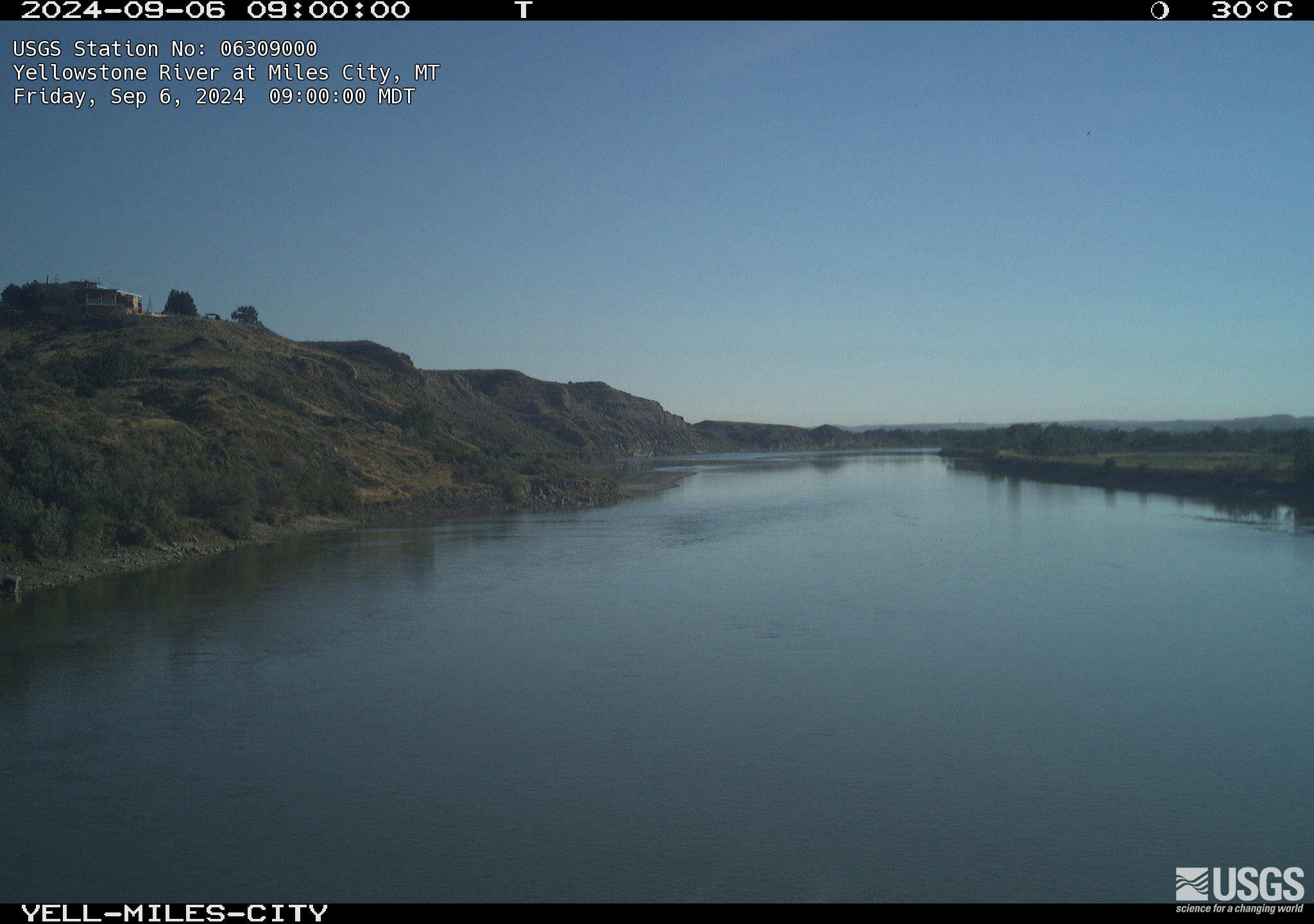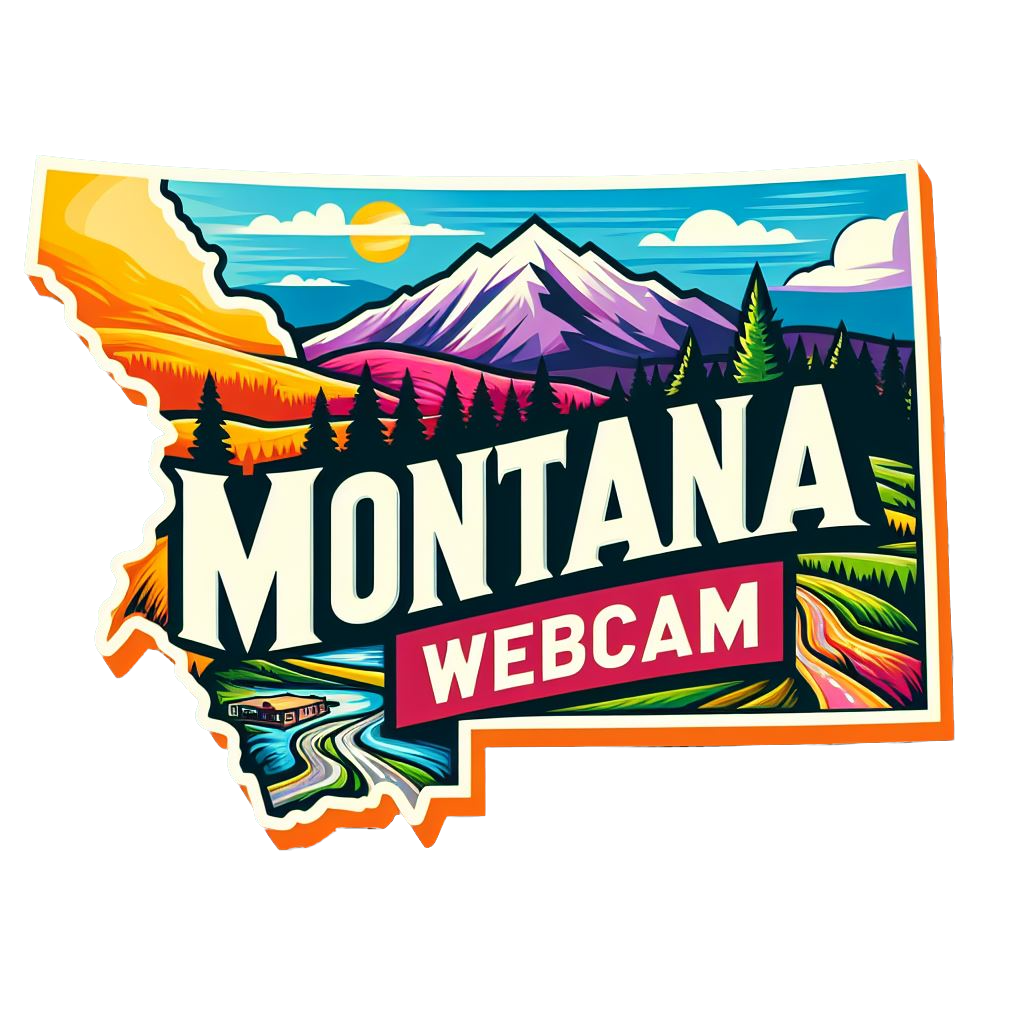Yellowstone River at Miles City, MT Weather Cams
Yellowstone River Cam

The Yellowstone River at Miles City, Montana: A History of Frontier Resilience and River Commerce
Yellowstone River at Miles City, MT Weather Cams. Located at the confluence of the Yellowstone and Tongue Rivers, Miles City, Montana, has a rich history deeply intertwined with the Yellowstone River. This history reflects the broader themes of exploration, settlement, and economic development in the American West. From its early days as a trading post and military fort to its growth as a vital agricultural and transportation hub, Miles City’s story is one of resilience and adaptation along the Yellowstone River.
Chapter 1: Indigenous Peoples and Early Exploration
Long before European settlers arrived, the Yellowstone River region was inhabited by Indigenous peoples, including the Crow, Sioux, Cheyenne, and Arapaho tribes. These tribes relied on the river for sustenance, using it for fishing, transportation, and as a source of fresh water. The river’s fertile banks provided ideal hunting grounds for bison, deer, and other game.
The first European exploration of the Yellowstone River can be traced back to the early 19th century. The Lewis and Clark Expedition of 1804-1806, commissioned by President Thomas Jefferson, was among the first to document the river and its surrounding landscapes. The expedition’s journals provided valuable information about the geography and natural resources of the region.
Chapter 2: Fort Keogh and the Founding of Miles City
The establishment of Fort Keogh in 1876 marked a significant turning point in the history of Miles City. Named after Captain Myles Keogh, who died at the Battle of the Little Bighorn, the fort was built to protect settlers and maintain order in the wake of the Great Sioux War. Fort Keogh served as a military outpost and supply depot, attracting soldiers, traders, and settlers to the area.
In 1877, Miles City was founded just east of the fort. The town was named after General Nelson A. Miles, a prominent military figure who played a key role in the Indian Wars. The strategic location of Miles City at the confluence of the Yellowstone and Tongue Rivers made it an ideal site for trade and transportation. The town quickly became a bustling hub for traders, trappers, and settlers.
Chapter 3: The Cattle Industry and Economic Growth
The late 19th century saw the rise of the cattle industry in Miles City, driven by the vast open ranges and fertile grasslands along the Yellowstone River. Cattle ranching became the backbone of the local economy, attracting cowboys, ranchers, and entrepreneurs from across the country. Miles City’s annual Bucking Horse Sale, established in the early 20th century, became a major event, drawing thousands of visitors and showcasing the town’s cowboy heritage.
The arrival of the Northern Pacific Railway in 1881 further spurred economic growth in Miles City. The railroad connected the town to markets and resources across the country, facilitating the transportation of cattle, goods, and people. Miles City became a vital link in the transportation network of the American West, serving as a major shipping point for cattle and agricultural products.
Chapter 4: Challenges and Resilience
Despite its growth and prosperity, Miles City faced numerous challenges in the late 19th and early 20th centuries. Harsh winters, droughts, and economic downturns tested the resilience of the town and its residents. The Great Blizzard of 1886-1887, known as the “Big Die-Up,” devastated cattle herds across the region, leading to significant economic losses for ranchers.
The town also faced the constant threat of flooding from the Yellowstone River. Major floods in 1923 and 1943 caused widespread damage to homes, businesses, and infrastructure. In response, the community undertook efforts to improve flood control and mitigate the impacts of future floods, including the construction of levees and dikes along the river.
Chapter 5: Modern-Day Miles City
Today, Miles City remains a vibrant and resilient community, with a rich heritage rooted in its frontier past and a strong connection to the Yellowstone River. The town’s historic downtown district features a mix of historic buildings, shops, restaurants, and cultural attractions, reflecting the unique character and history of the area.
Agriculture continues to play a vital role in the local economy, with cattle ranching, farming, and agribusiness providing jobs and economic stability. The annual Bucking Horse Sale remains a major event, celebrating the town’s cowboy culture and attracting visitors from across the country.
Miles City is also a gateway to outdoor recreation and natural beauty, with the Yellowstone River offering opportunities for fishing, boating, and wildlife viewing. The nearby Custer National Forest and Makoshika State Park provide additional recreational opportunities, including hiking, camping, and hunting.
Chapter 6: Looking Ahead
As Miles City looks to the future, it remains committed to preserving its unique heritage, fostering economic growth, and enhancing the quality of life for its residents. The town’s strong sense of community, resilience in the face of challenges, and enduring connection to the Yellowstone River will continue to shape its identity and guide its development for generations to come.
With its rich history, scenic landscapes, and vibrant community spirit, Miles City is poised to remain a cherished destination for visitors and a beloved home for its residents. Whether exploring the town’s historic sites, experiencing its cowboy culture, or enjoying the natural beauty of the Yellowstone River, there is something for everyone to discover and enjoy in Miles City, Montana.
For more information, visit the official Miles City, MT website.
